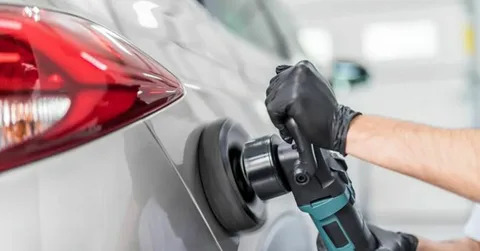Introduction
Imagine this: It’s midnight, you’re driving home after a long day, and suddenly your car sputters to a stop on a deserted road. No gas stations in sight, your phone battery is dying, and you’re not sure what’s wrong with your vehicle. Scenarios like this happen every day to thousands of drivers, which is why having roadside assistance isn’t just convenient—it’s a critical component of responsible vehicle ownership.
In this comprehensive guide, we’ll explore why roadside assistance should be part of every driver’s emergency preparedness plan. We’ll examine the different types of coverage available, including popular options like State Farm roadside assistance, and discuss how preventative maintenance—such as auto paint repair services and keeping your car auto waxed and polished—can help avoid many common roadside emergencies before they occur.
The Harsh Reality of Roadside Emergencies
1. Breakdown Statistics That Will Make You Think Twice
According to AAA:
-
32 million drivers experience breakdowns each year requiring roadside assistance
-
40% of drivers aren’t prepared for emergencies
-
12% of breakdowns happen in dangerous locations (highways, high-crime areas)
These numbers prove that vehicle emergencies aren’t rare occurrences—they’re inevitable for most drivers at some point.
2. The True Costs of Being Unprepared
Without roadside assistance, a simple breakdown can turn into:
-
$150+ for emergency towing
-
$100+ for locksmith services if keys are locked inside
-
Hours wasted waiting for help to arrive
-
Potential safety risks from being stranded
When you compare this to the
50−
50−150 annual cost of most roadside assistance plans, the value becomes clear.
Why Roadside Assistance is Non-Negotiable for Modern Drivers
1. Comprehensive Protection When You Need It Most
Quality roadside assistance plans cover:
-
Towing to the nearest qualified repair facility
-
Battery jump-starts (the #1 most common call)
-
Flat tire changes (if you have a spare)
-
Lockout services (keys locked inside)
-
Fuel delivery if you run out of gas
-
Winching if stuck in mud or snow
2. Safety Advantages You Can’t Ignore
Modern roadside assistance offers: GPS tracking for faster service Mobile app integration for one-touch help 24/7 dispatch centers with trained operators Vetted service providers you can trust
3. Specialized Services Like State Farm Roadside Assistance
Many insurance providers now offer enhanced roadside programs. State Farm roadside assistance, for example, provides:
-
Up to 15 miles of towing
-
Trip interruption coverage for hotels/meals
-
Rental car reimbursement in some cases
-
Battery and bulb replacement discounts
Preventative Maintenance: Your First Line of Defense
While roadside assistance is crucial, the smartest drivers combine it with proper vehicle maintenance to prevent many emergencies.
1. Battery Care to Avoid the #1 Breakdown Cause
-
Test battery health twice yearly
-
Clean terminals from corrosive buildup
-
Replace every 3-5 years (sooner in extreme climates)
-
Consider preventative replacement at first signs of weakness
2. Tire Maintenance for Safety and Reliability
-
Check pressure monthly (including spare)
-
Rotate tires every 5,000-8,000 miles
-
Inspect for wear/damage before long trips
-
Know how to access your spare tire (many drivers don’t!)
3. Protecting Your Vehicle’s Exterior
Damage from road debris and weather can lead to bigger problems:
-
Auto paint repair services fix chips before they cause rust
-
Regular auto waxed and polished treatments protect against UV damage
-
Undercarriage washes prevent salt corrosion in winter climates
A well-maintained exterior isn’t just about looks—it prevents costly structural damage that could strand you.
Choosing the Right Roadside Assistance Plan
Comparison of Top Providers
Provider
Cost/Year
Towing Miles
Special Features
State Farm
50−
50−120
15
Trip interruption coverage
AAA
60−
60−160
3-200
Travel discounts, free maps
Good Sam
80−
80−140
100
RV coverage available
Manufacturer
Varies
Varies
Often free with new vehicles
Key Selection Criteria
-
Coverage Area (some are regional only)
-
Response Time Guarantees
-
Service Limitations (number of calls/year)
-
Additional Benefits (travel perks, insurance discounts)
What to Do When You Need Roadside Assistance
Step-by-Step Emergency Protocol
-
Pull Over Safely
-
Use hazard lights
-
Find level ground if possible
-
Avoid curves/hills where visibility is poor
-
-
Make Your Vehicle Visible
-
Set up reflective triangles
-
Turn on interior dome light at night
-
Raise hood (universal distress signal)
-
-
Call for Help
-
Provide exact location (mile markers help)
-
Describe vehicle make/model/color
-
Explain the problem clearly
-
-
While Waiting
-
Stay with your vehicle if safe
-
Keep doors locked in urban areas
-
Have ID and proof of insurance ready
-
Advanced Preparedness Tips
Essential Emergency Kit Items
-
Jumper cables (heavy-duty)
-
Portable phone charger
-
Basic tools (multi-tool, flashlight)
-
First aid supplies
-
Non-perishable snacks/water
-
Warm blanket (for winter breakdowns)
Digital Preparedness
-
Save roadside assistance number in phone
-
Download provider’s mobile app
-
Enable location sharing with family
-
Bookmark nearby repair shops along your route
Final Thoughts
In today’s world of unpredictable weather, increasing road hazards, and complex vehicle systems, roadside assistance has transitioned from a luxury to an absolute necessity. Whether you choose State Farm roadside assistance or another reputable provider, the peace of mind knowing professional help is always available is priceless.
By combining quality roadside coverage with proactive maintenance—including auto paint repair services and keeping your car auto waxed and polished—you create multiple layers of protection for yourself and your vehicle. Remember: The best emergency plan is the one you have in place before you need it. Don’t wait until you’re stranded on the side of the road to wish you had coverage. Invest in roadside assistance today and drive with confidence knowing you’re prepared for whatever the road may bring.
Take action now:
-
Review your current auto policy for roadside benefits
-
Schedule maintenance to address potential issues
-
Build an emergency kit for your trunk
-
Program emergency numbers into your phone
FAQs
1. Does State Farm roadside assistance cover rental cars?
Yes, when you purchase their optional rental reimbursement coverage. Standard plans only cover vehicles listed on your policy.
2. How often should I get professional auto paint repair services?
Annually for minor touch-ups, or immediately after noticing chips/scratches to prevent rust. Combine with keeping your car auto waxed and polished every 3-4 months for maximum protection.
3. Can I use roadside assistance for someone else’s car if I’m driving it?
Most plans cover the person, not the vehicle—meaning you’re typically covered when driving any car. However, verify with your specific provider.
This post was created with our nice and easy submission form. Create your post!



Comments
0 comments